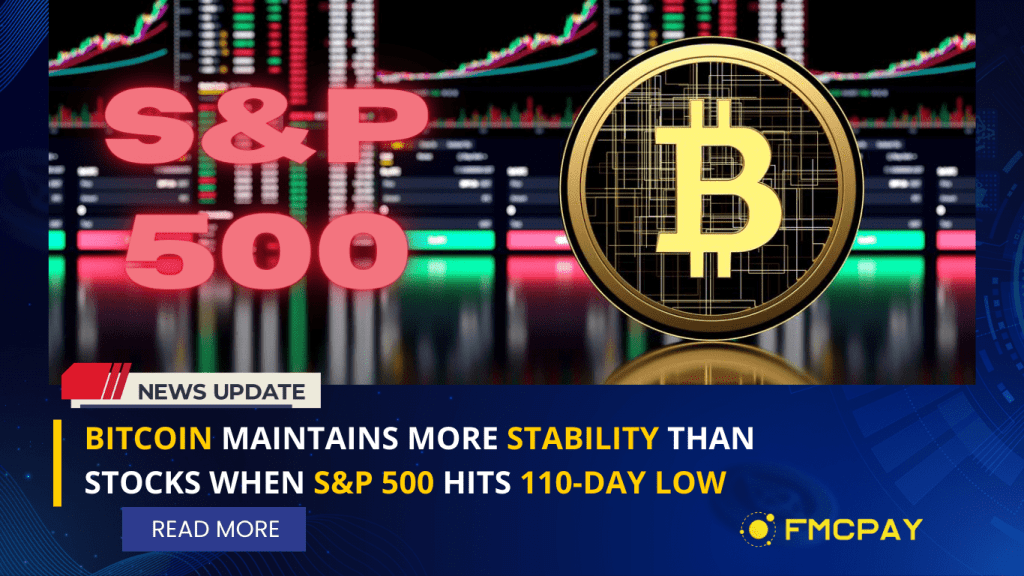Bitcoin maintains more stability than Stocks present though the US Federal Reserve delivered a message that reverberated throughout financial markets on September 20th, creating shockwaves of uncertainty.
Fed’s influence on S&P 500 and Bitcoin: Assessing the road ahead
As investors grapple with this new economic landscape, a pressing question emerges: Can we expect both the S&P 500 and Bitcoin (BTC) to continue their underperformance in the face of this tightening monetary policy?
The Fed’s decision had an immediate and significant impact, with the S&P 500 plummeting to its lowest point in 110 days, signaling growing apprehension and uncertainty among investors.
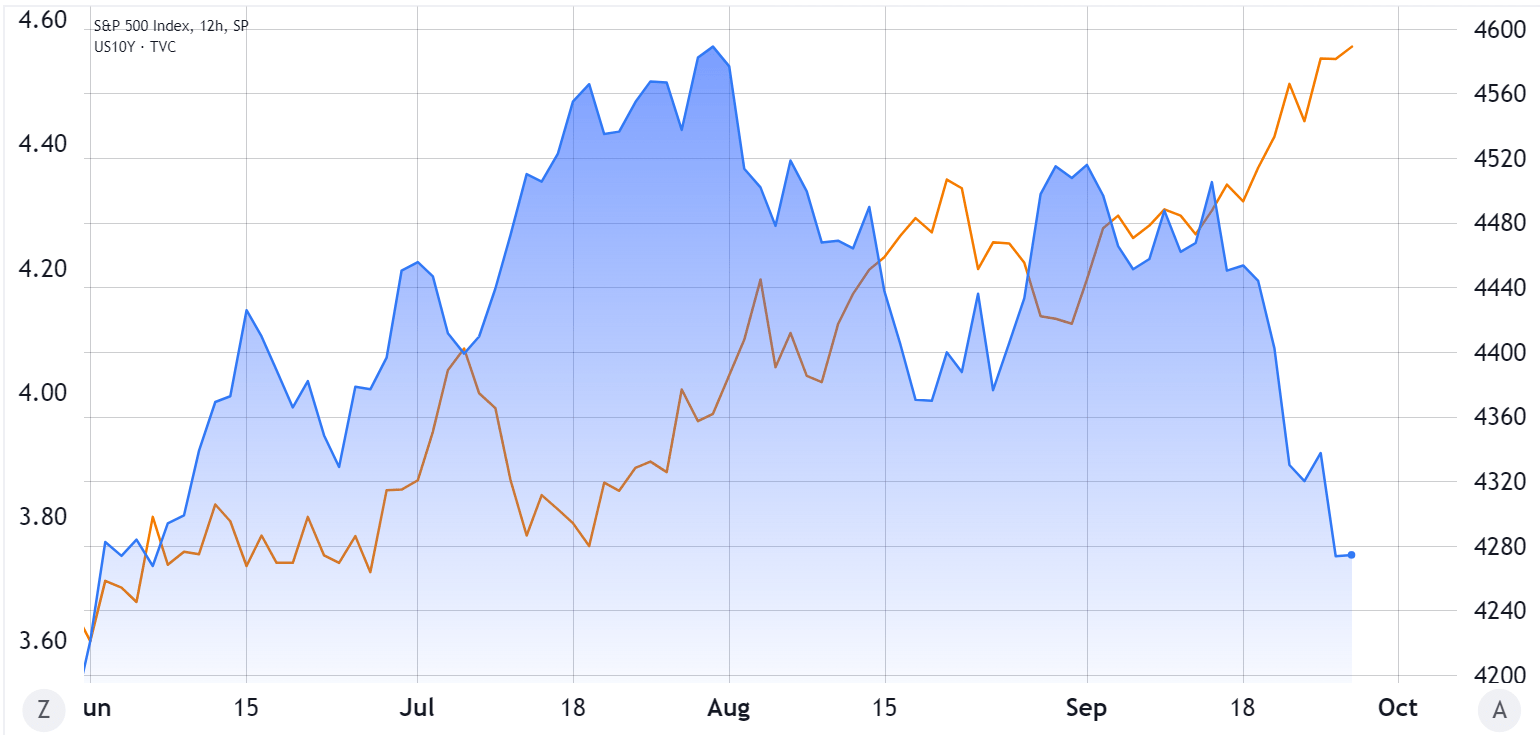
Remarkably, 10-year Treasury yields have surged to levels not witnessed since October 2007. This surge underscores the market’s conviction that interest rates will persistently climb or, at the very least temper inflation. The anticipation is that inflation, currently at 4.55%, will inevitably align with the prevailing interest rate. In either scenario, there is mounting concern regarding the Federal Reserve’s capacity to sustain these elevated interest rates without causing turbulence in the economy.
Why Bitcoin maintains more stability than other financial fields
An intriguing development amidst this financial turmoil is the apparent disconnection between the S&P 500 and cryptocurrencies, particularly Bitcoin. Over the past 5 months, the 30-day correlation between these two asset classes has displayed no discernible pattern or trend
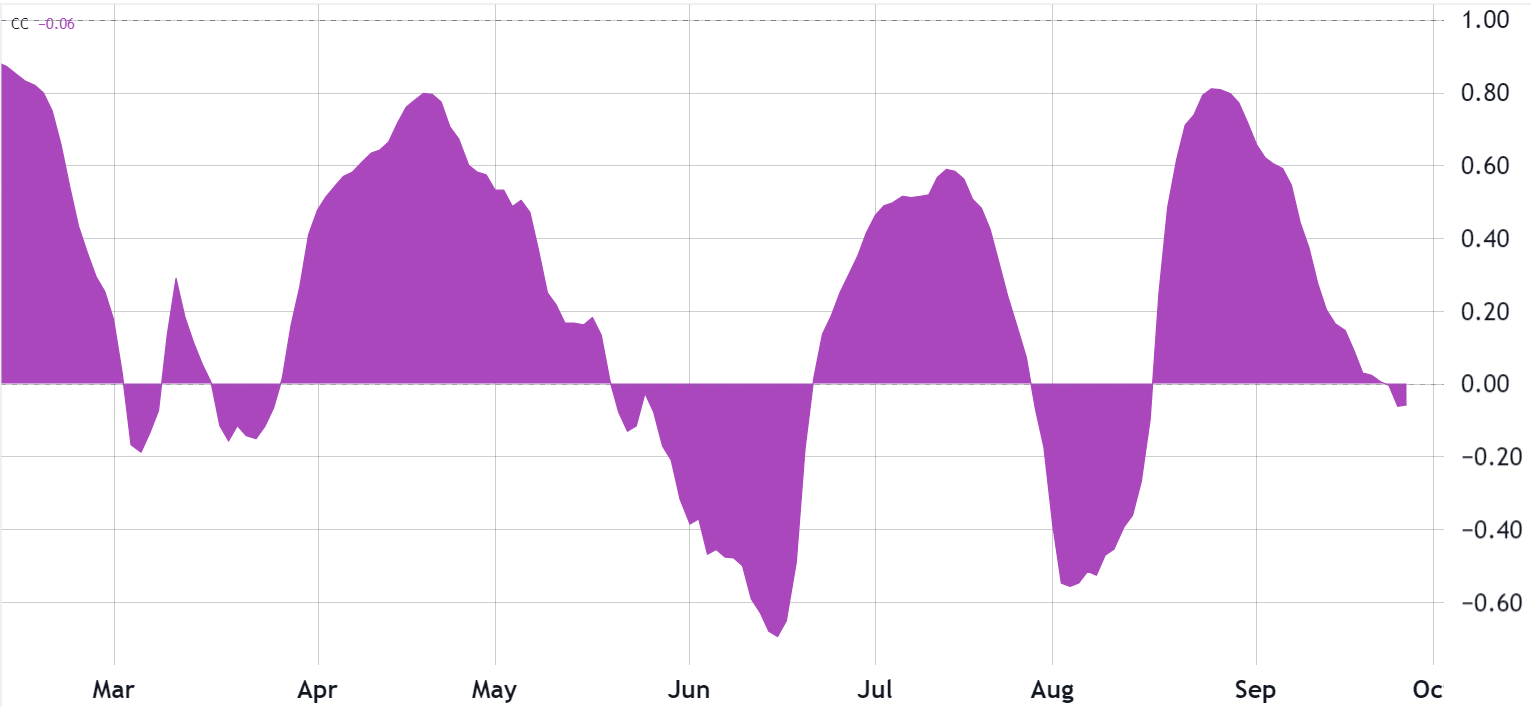
This divergence suggests that Bitcoin maintains more stability because of preemptively responding to a potential stock market correction or that external factors are exerting their influence. One plausible explanation for this detachment is the combination of heightened excitement surrounding the potential launch of a Bitcoin spot ETF and growing regulatory concerns, which may have constrained the cryptocurrency’s upward momentum. Conversely, the S&P 500 has benefited from a robust second-quarter earnings report, although it’s crucial to bear in mind that these figures reflect the situation from three months ago.
Decoupling could be beneficial for Bitcoin price
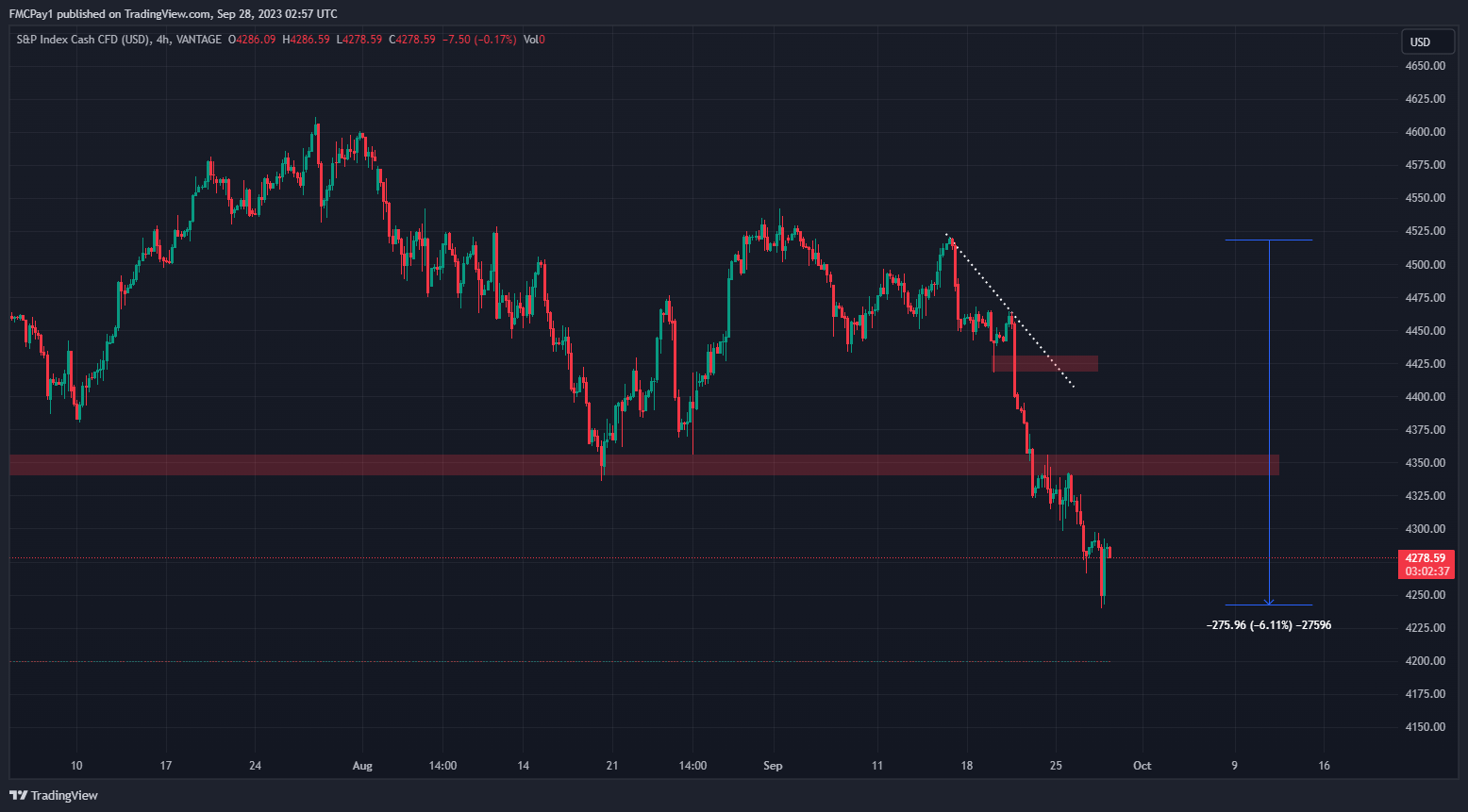
Following the interest rate announcement, the S&P 500 and US stocks exhibited notable movements. According to technical analysis, the S&P 500 breached a key support level within the range of 4340-4350, representing a 6% decline.
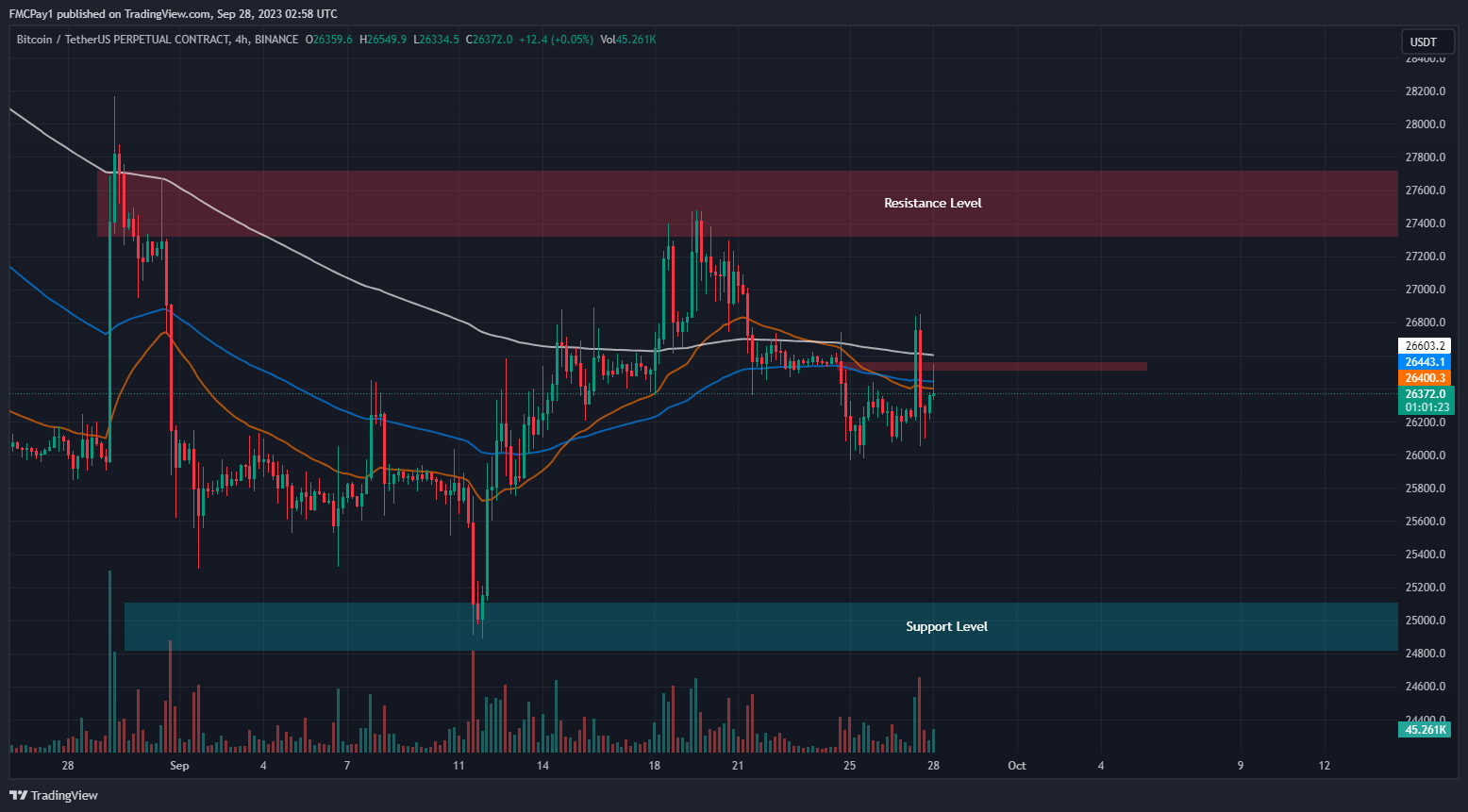
In contrast to Bitcoin, its price has remained relatively stable within the range of $26,000 to $27,000. This suggests that global news and events are currently having less pronounced effects on the cryptocurrency market compared to the heightened volatility experienced in the past year.
Read more Weekly BTC analysis here: Weekly crypto market report of the 39th 2023 FMCPay
Numerous factors could contribute to the decoupling of cryptocurrencies from traditional markets like the S&P 500. If the government encounters challenges in issuing long-term debt, it may raise concerns about financial stability. Such difficulties could drive investors to seek hedges against the risk of an economic downturn, making alternative assets like gold and Bitcoin more attractive.
Even if the US dollar remains strong, persistent inflation might force the US Treasury to raise the debt ceiling, potentially eroding the currency’s value over time. This risk remains pertinent as investors look for ways to safeguard their wealth with assets less susceptible to inflation.
Global political unrest or uncertainties surrounding the US elections in 2024 could also lead to instability in financial markets. In certain countries, concerns about capital controls are on the rise, and historical instances of international economic sanctions underscore the risk of governments imposing such controls, potentially further incentivizing investors to turn to cryptocurrencies.
Conclusion
Finally, unlike traditional stocks and bonds, cryptocurrencies are not tethered to corporate earnings, growth, or yields above inflation. Instead, they operate on their own set of dynamics, influenced by factors like regulatory changes, resilience to cyberattacks, and predictable monetary policies. Consequently, Bitcoin could experience significant outperformance relative to the S&P 500, regardless of the scenarios discussed above.
Check Out the Latest Prices, Charts, and Data of BTC/USDT

